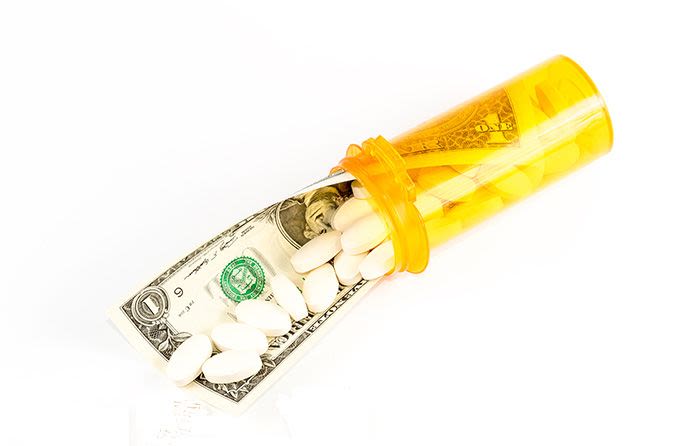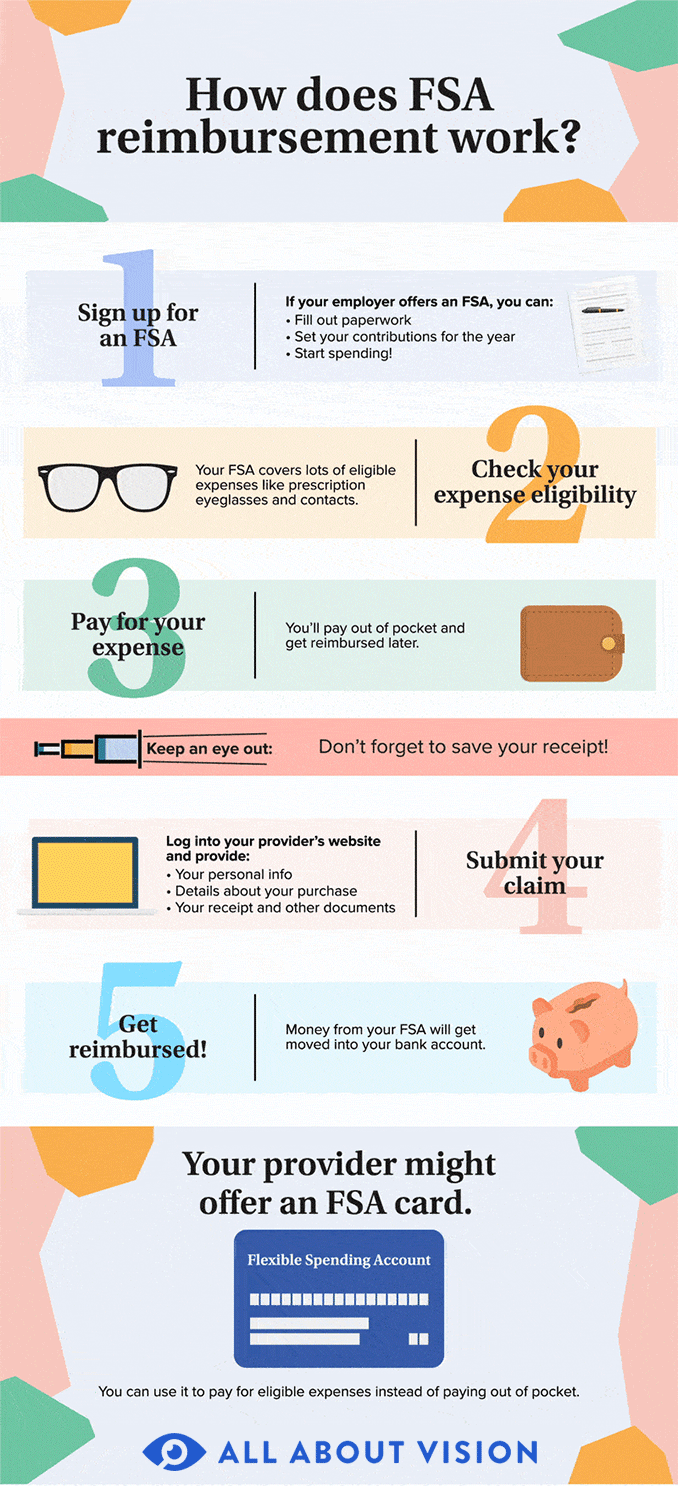FSA reimbursement rules and deadlines for 2021

A flexible spending account (FSA) can help you save on the cost of health care throughout the year. While a debit-style FSA card may be an option, you can also take advantage of FSA reimbursement after you make a purchase.
Getting reimbursed is relatively straightforward. After you pay for eligible health expenses out of pocket (vision expenses included), you’ll submit a claim to your provider. If your claim is accepted, your provider will move money from your FSA into your bank account.
Here’s what you need to know about the rules of reimbursement:
How does FSA reimbursement work?
You will need to follow a few basic steps to make sure you’re fully reimbursed for any eligible out-of-pocket expenses:
Sign up for an FSA. The first step is to enroll in an FSA with your employer. You will need to fill out any necessary paperwork and set your contribution for the year, which will be automatically withdrawn from your paychecks in equal amounts. On the first day of coverage, you will immediately have access to the full amount you intend to contribute for the entire year — not just the first month’s funds.
Make sure your expense is eligible. While not every expense is eligible, there are plenty of services and products that can be paid for with an FSA — including prescription eyeglasses and contact lenses.
Check your bank account. Since you’ll need to pay out of pocket, make sure there’s enough money in your bank account to cover the cost of your health care expense.
Save your receipt. To get reimbursed, you’ll need to prove that you paid for the expense out of pocket. Hang onto your original receipt and make a digital copy for your records.
Gather additional proof. You might need to submit more documentation, depending on the type of service or product you paid for. For example, if you’re submitting a claim for prescription eyeglasses, you might need to provide a copy of your vision prescription in addition to an itemized receipt for the glasses.
SEE RELATED: What's the difference between an FSA and an HSA?
Is there a deadline for filing FSA reimbursement claims?
If your funds expire at the end of the calendar year, the deadline to make FSA card or out-of-pocket purchases is December 31 at 11:59 p.m. However, most FSAs grant additional time to file leftover reimbursement claims after the FSA year ends. This is called a run-out period.
A common run-out period is 90 days. It does not allow you to incur more expenses past your spending deadline — all receipts still need to be dated on or before the last day of your plan year. These time frames will vary, so check with your FSA provider or employer if you’re not sure.
Some employers offer a grace period for expenses at the start of the next year. In this case, you could have up to two and a half additional months to spend your FSA funds. If this is the case, the deadline for reimbursement claims will also move forward.
Keep in mind that you won’t be able to utilize the grace period if your employer offers a partial FSA rollover (up to $550 in 2021), or vice versa.
SEE RELATED: Current FSA contribution limits
How do I submit a claim for reimbursement?
Once you’ve paid for your eligible expense out of pocket, you can submit your claim for reimbursement. Log in to the website designated by your FSA provider and find the option to submit your claim.
You’ll probably be asked to provide some information about the product or service you received and the date it was purchased or provided. You’ll need to attach the digital copy of your receipt and declare how much of the expense was covered by any health insurance. Attaching the explanation of benefits (EOB) provided by your insurance company can be especially helpful in determining your reimbursement.
If your claim is accepted, you will be reimbursed with the pre-tax money in your FSA. How long reimbursement takes will vary depending on your account provider.
Are there other reimbursement options?
Your plan may offer an FSA card. This is essentially a debit card that pulls money from your FSA account instead of a checking account. In this case, you can simply use your FSA card to pay for eligible expenses at the time of service or purchase rather than having to deal with a reimbursement claim — the expense will automatically be accepted or denied.
You’ll still want to keep your receipts though, just in case you need to dispute a denied claim.
READ MORE: Is vision insurance worth it?
Page published on Thursday, September 26, 2019





